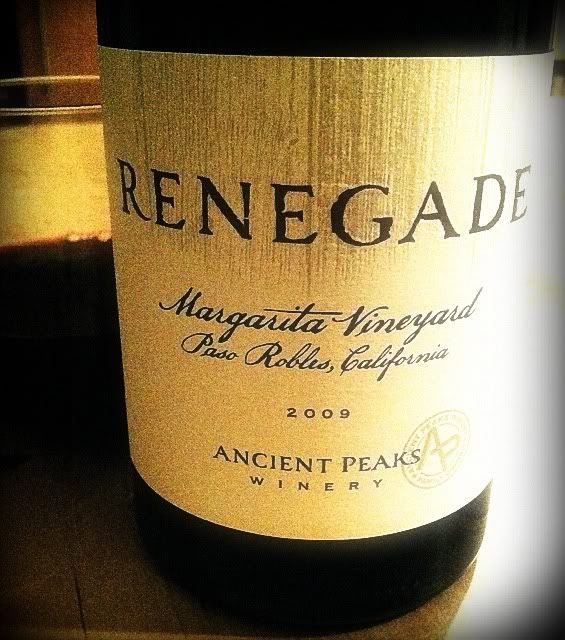Nearly every wine lover has some favorite producers, a wineries you turn to when you want either "tried and true" or "pleasantly surprised." One of mine is Ancient Peaks Winery in Santa Margarita, California, about 20 miles south of Paso Robles at the foot of the Santa Lucia Mountain range.
It was indeed a pleasant surprise to open the box and find that they had sent a bottle of their 2009 Renegade red blend for me to try. This may read more like a heart on my sleeve than a full disclosure, but so be it. I like the AP folks, and I like the wines they make.
Renegade is made from grapes grown in Ancient Peaks' estate Margarita Vineyard. The winery's press release claims its historic site - the Santa Margarita Ranch, near Paso Robles, California - has played host to missionaries, gunslingers, roughriders and outlaws. The legacy of this varied cast of characters provided the inspiration for the name.
I've written before in Now And Zin about the Santa Margarita Vineyard and its wonderful terroir. The wines made from its grapes have never failed to impress me, and are among my favorite California wines.
The varieties used in Renegade - 46% Syrah, 31% Malbec and 23% Petit Verdot - give the promise of a substantial and complex wine. The individual lots were aged in oak barrels, 35% of which use new oak. The oak is 60% French and 40% American. The wine is aged for 18 months in these conditions. Ancient Peaks Renegade brings a 14.5% abv level - a little below standard issue for the region - and just over 1,000 cases were produced. The wine retails for $23 per bottle.
The nose shows big blackberry aromas, along with coffee, black cherry and a waft of black olives. The second night the bottle was open, a note of tar made itself known.
On the palate, the flavor of plums is joined by a meaty characteristic and firm tannins. The savory aspect increases after a day’s rest. The wine displays a vary dark and earthy fruit expression, which isn’t surprising considering the grape varieties used.

No comments:
Post a Comment